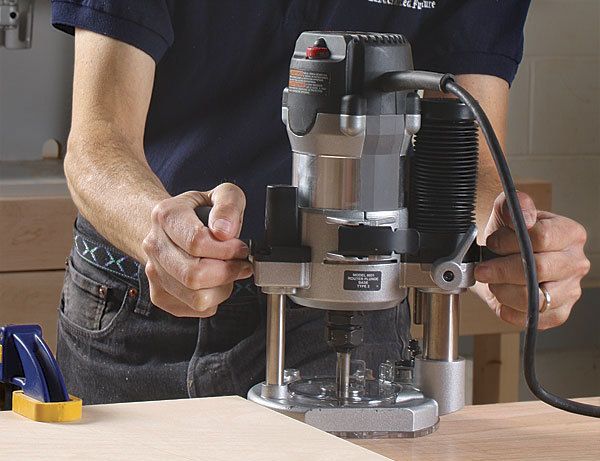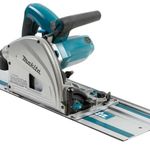How Many Routers Does Your Shop Need?
For most people, the answer is three
Synopsis: If you do a lot of routing, there’s a pretty strong argument for having more than one router in your shop. One route to take is to use a combo kit, with one motor and two bases — one for use in a table and one for freehand work. But Jeff Miller makes a good case for having three separate machines: one for the table, where you can run moldings, cut grooves, and tackle precise joinery; one for freehand routing, such as long cuts and stopped cuts; and even a small handheld router for small edge details and other delicate work. If you think three is too many, consider this: Miller recently counted the routers in his shop and came up with nine!
Doing a quick inventory of my shop recently, I discovered that over the years I have accumulated nine routers. Nine! How did that happen? Does the average woodworker really need that many routers?
The short answer, happily, is no. Still, the argument for having more than one router is powerful. You can leave one in your router table and have another for handheld work. Second, adding a router with particular strengths can make certain tasks much more convenient, whether you’re cutting edge profiles with large, heavy bits or routing shallow hinge mortises on narrow stock.
There are many router types available, but which ones do you really need? I’ll suggest two approaches. Either one will tackle a wide range of work, but the first is kinder to your wallet.
For good value, start with a combo kit
A combination router kit, is a very cost-effective way of setting up your shop for both table and handheld routing. The kit comes with one router motor and two bases—one fixed, one plunge. This lets you mount the fixed base in a table and keep the other for topside use.
I recommend putting the fixed base in the table, mainly because the plunge base is so much more versatile for topside use. Second, when the router is mounted in the table, it’s often easier to adjust bit height with the fixed base than it is with the plunge. This makes for an economical choice—you can find a good combination kit for around $200, saving $50 to $100 or more compared with the purchase of two individual routers of a similar size and power.
To the combo kit, add a trim router. Although its limited horsepower confines it to lighter-duty tasks, it is much easier to control than a larger router. It is also limited to working with 1⁄4-in.-shank bits, but its lower torque and one-handed size are perfect for hinge mortising, inlay, and small edge profiles like chamfers and roundovers. It’s great for any task that doesn’t call for large bits, deep cuts, or lots of horsepower.
With this package of routers, you can tackle almost everything.
From Fine Woodworking #216
For the full article, download the PDF below:
Fine Woodworking Recommended Products

Stanley Powerlock 16-ft. tape measure

Makita SP6000J1 Track Saw

Festool DF 500 Q-Set Domino Joiner






















Comments
I have the Bosch 1617 in the router table, need a plunge base for it. For all other work, I have the DeWalt PK611 kit with plunge base. Two routers do all I should ever need. I think about a tiny router for inlays, but so far haven't needed anything that small.
Log in or create an account to post a comment.
Sign up Log in